New dahlia trends have been creeping in over the last few years.
A typical dahlia border used to look like a fruit salad. There were usually random mixes of brightly coloured dahlias in white, yellow, red and pink, without any under-planting.
Context is everything in gardens. Dahlias are being used differently. There are new, interesting directions in foliage. Dahlias are now partnered with a wide range of other flowers to create dramatic effects.
‘Few plants can rival dahlias if you want a long season in your garden,’ says Steven Edney, head gardener at The Salutation garden in Sandwich. ‘They flower from two to five months at a time, depending on your climate.’
Steven has dahlias in his blood. His family bred dahlias. He has been part of the RHS dahlia trials at Wisley, and he has now created a beautiful dahlia garden at The Salutation.
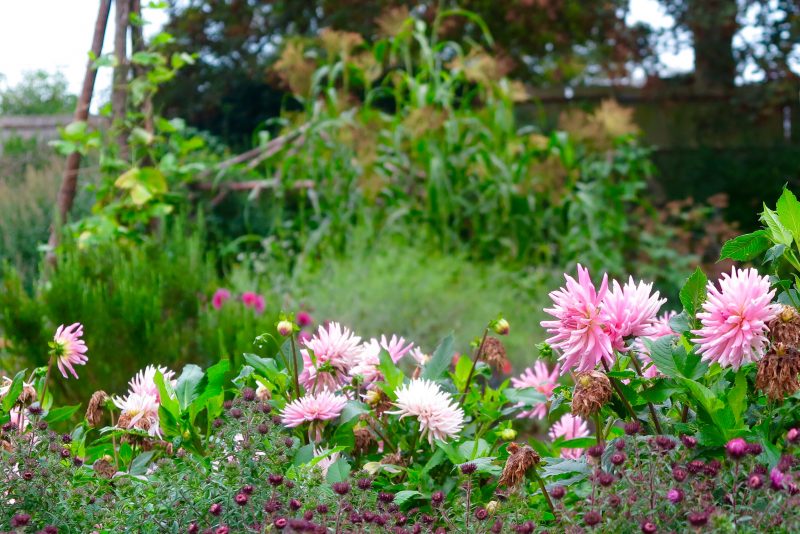
Dahlia ‘Weddington Farm’ was bred by Steven’s father. It has survived for 30 years over winter and summer at Steven’s family home. Here it borders the Salutation’s vegetable garden.
The Salutation was designed by Lutyens. Steven joined eleven years ago to restore the Grade 2 Listed garden. At that point, the current vegetable patch was a mound of rubbish and rubble. It is now a delightful mix of dahlias and vegetables.
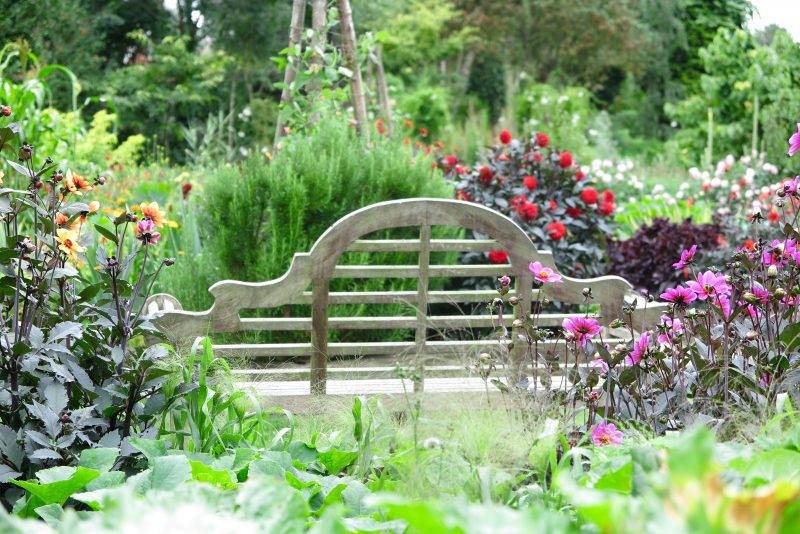
The Salutation, appropriately, has Lutyens benches. Surrounded here by the pink ‘Gracie M’ dahlia and red ‘Mountain Fire.’
Colour themed dahlia trends
Dahlias used to be planted alone in beds, in a riot of contrasting colours. Now you’re more likely to see them incorporated into a mixed border, themed by colour rather than by type of plant. There is a traditional dahlia bed at The Salutation, but most of the dahlias are planted with other plants.
The dahlia bed itself is a trial bed, where Steven subjects his dahlia types to the kind of treatment they would get in an ordinary middle-sized garden.
‘I don’t water them, and I only feed them with a manure mulch and some blood, fish and bone,’ he says. ‘I think that’s what most domestic gardeners would do, and it’s important to see how they survive in non-professional gardens before we sell them to the public.’ Even so, the dahlia bed is colour-themed, with dark reds, pinks, peaches, yellows and moving harmoniously through the colour spectrum.
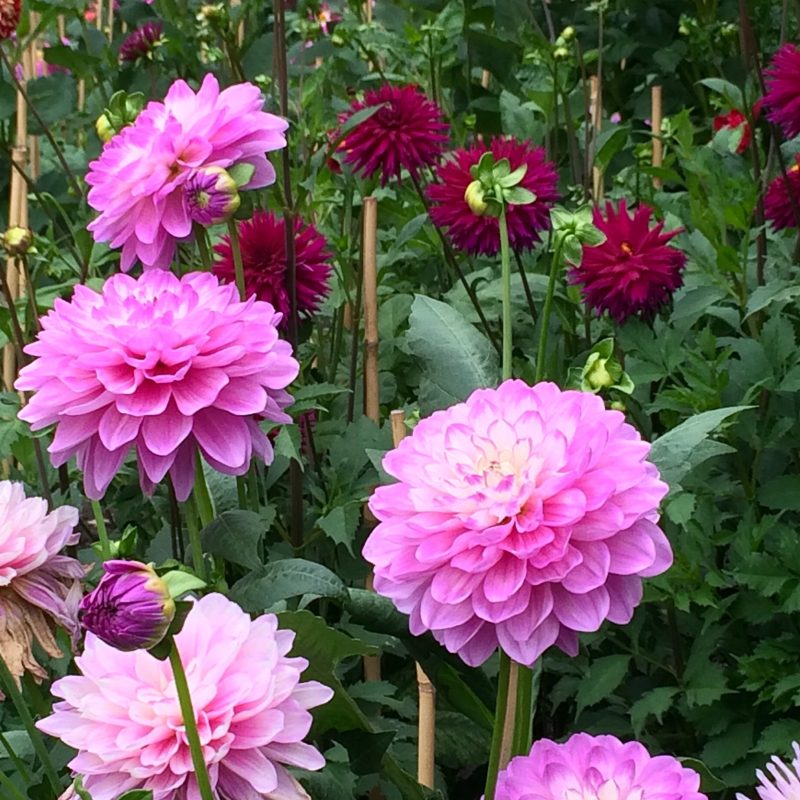
There are conventional beds planted only with dahlias at the Salutation. These are arranged by colour – reds and pinks going into peaches and yellows, and so on.
Think about the foliage as well as the flowers
I love the use of foliage and colour in The Salutation’s dahlias.
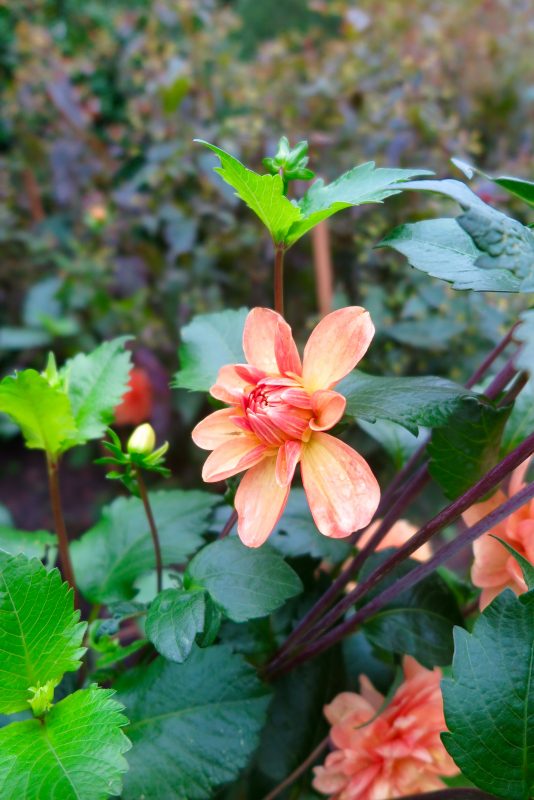
A peach dahlia is married with a bronze background foliage. Bring the dahlia colour alive by thinking about the foliage colour of the plant next to it.
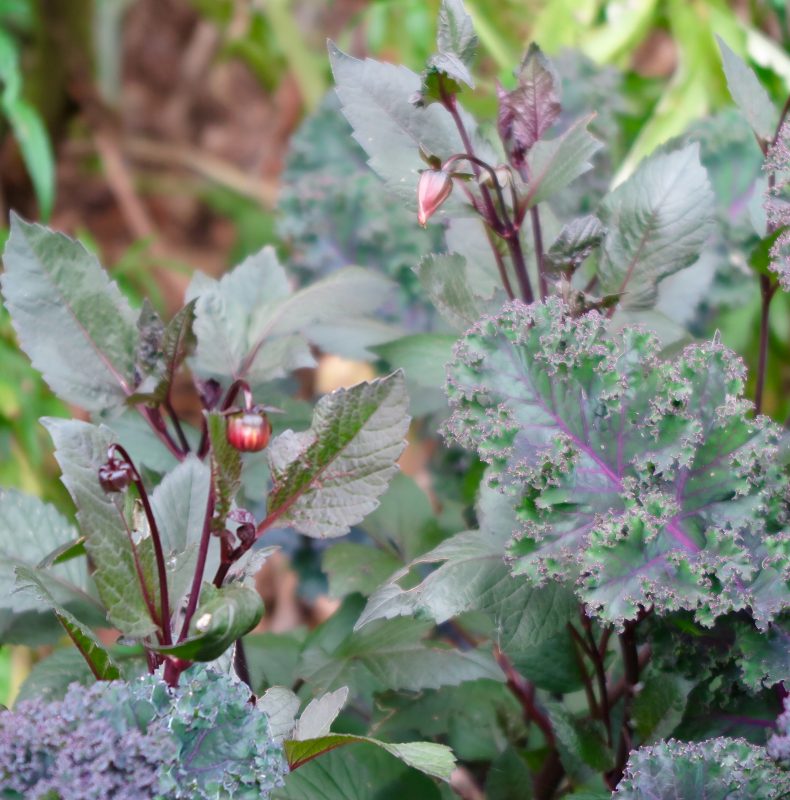
This foliage combination also marries veg and dahlia – this is an Australis hybrid dahlia with kale in one of the ornamental borders.
New dahlias
Steven is always growing and trialling new dahlia seedlings and crosses. He sees how the public responds to the new varieties, and tests for a couple of years to make sure they come back true and are reasonably hardy.
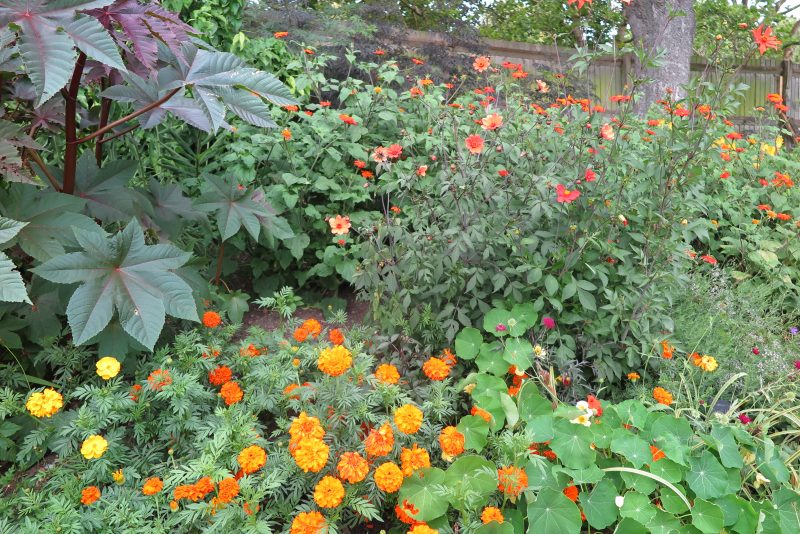
Three different orange dahlia seedlings developed at The Salutation in an orange grouping with marigolds, nasturtiums and ricinus.
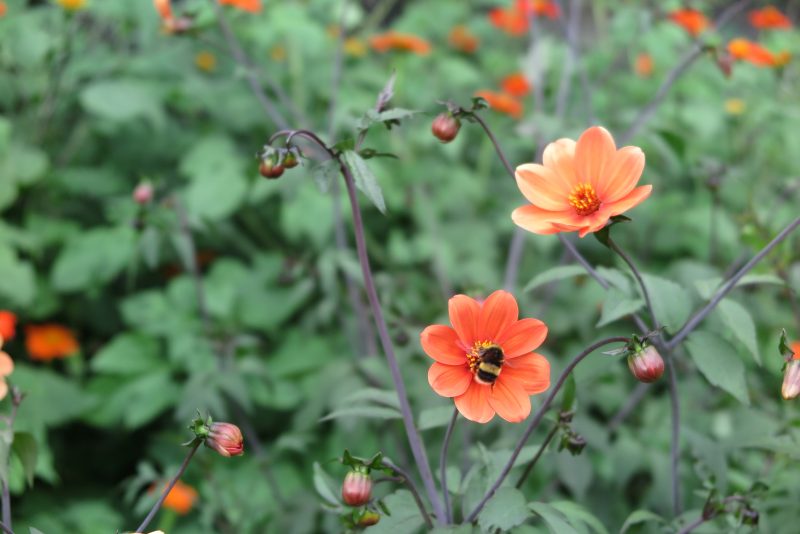
There are three kinds of orange dahlia being trialled here. The bees like them all.
Dahlias in exotic gardens
Dahlias were originally imported from Mexico, so they can be considered ‘exotics’. The bright colours and sharp sculptural shapes of dahlia flowers make them an ideal choice for exotic gardens. The Salutation has an Exotic garden just by the entrance. Steven and his team are planning to expand it next year.
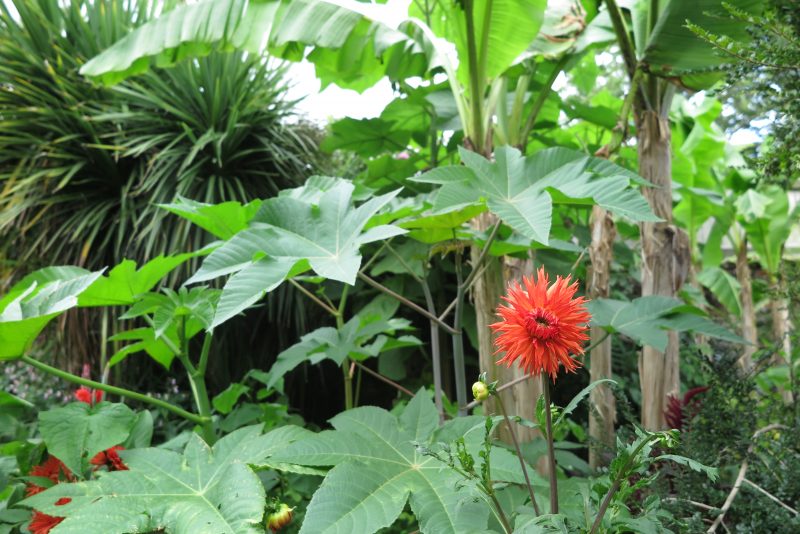
Dahlia ‘Mel’s Orange Marmalade’ with banana palms and tree ferns in the Salutation’s Exotic garden
‘I’m very influenced by Gertrude Jekyll,’ says Steven. ‘She combined exotic plants like ricinus with dahlias in her own garden.’
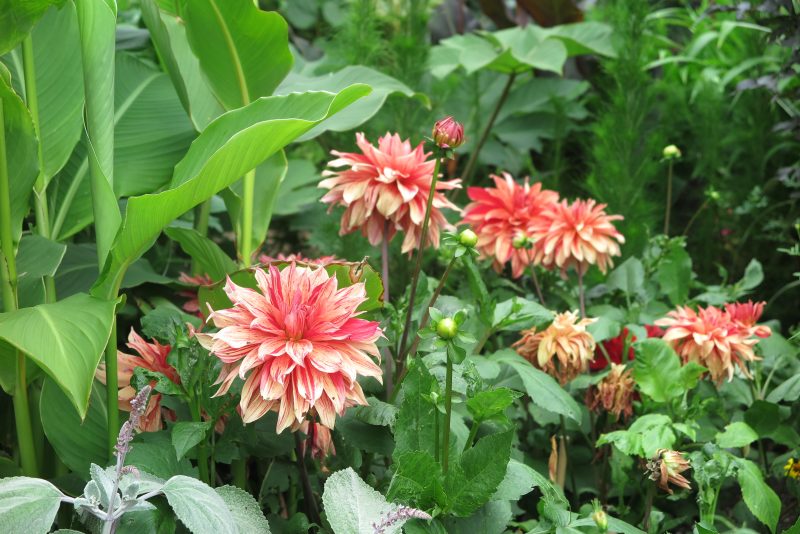
Another vivid orange dahlia (‘Babylon Gevland’) gives jungle colour to the exotic garden.
Dahlias with vegetables
As well as extending the flowering season in the garden, dahlias last a long time in the vase. They are cut-and-come-again flowers, which means that the more you cut them, the more flowers you’ll get.
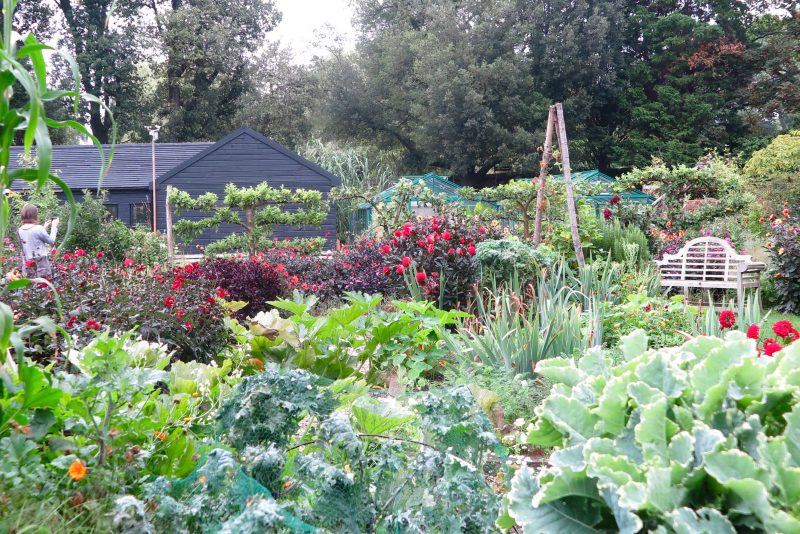
Dahlias in the vegetable garden at The Salutation.
Dahlias were, in fact, originally imported as food. Dahlias tubers are like potatoes, apparently. Personally, I can’t quite bring myself to try them. If, however, you dig your dahlias up at the end of the season, you could roast them.
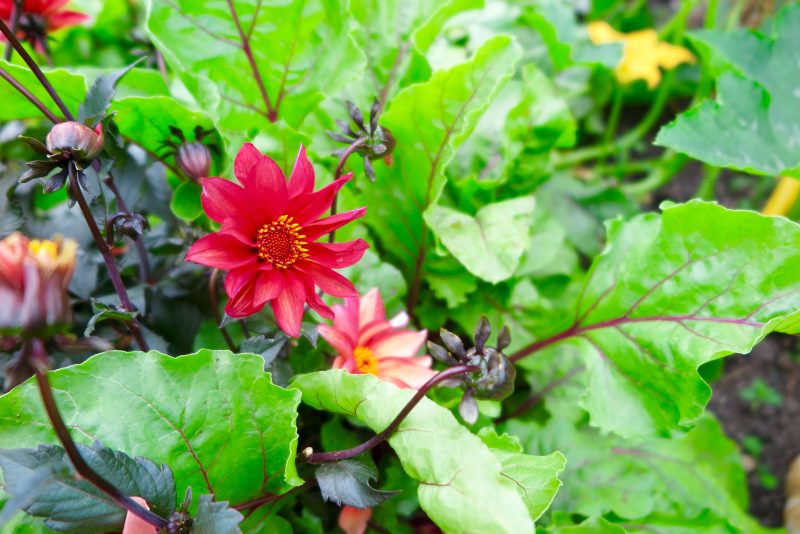
Dahlia with chard leaves in the vegetable garden.
At the Salutation, there are dahlias in the vegetable beds, as well as partnered with kale, chard, pernilla for leaf contrast.
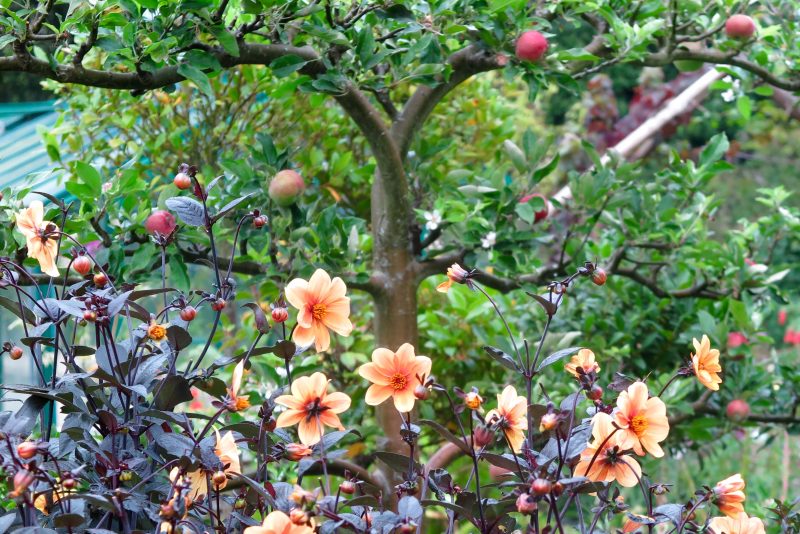
Dahlias with espaliered fruit trees. This is Dahlia ‘Happy Single Party’. I wonder how it came by the name?
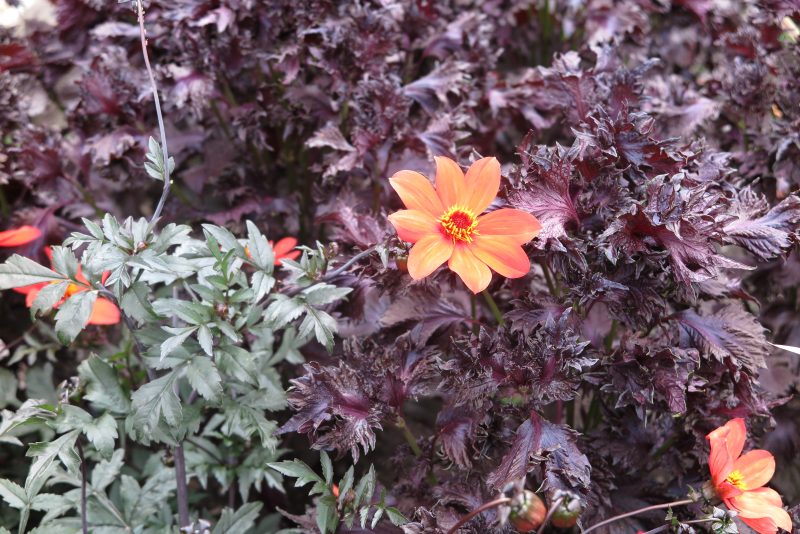
Perilla is a very popular salad leaf in Japan. Here it’s partnered with a dahlia seedling.
New dahlia trends in pots
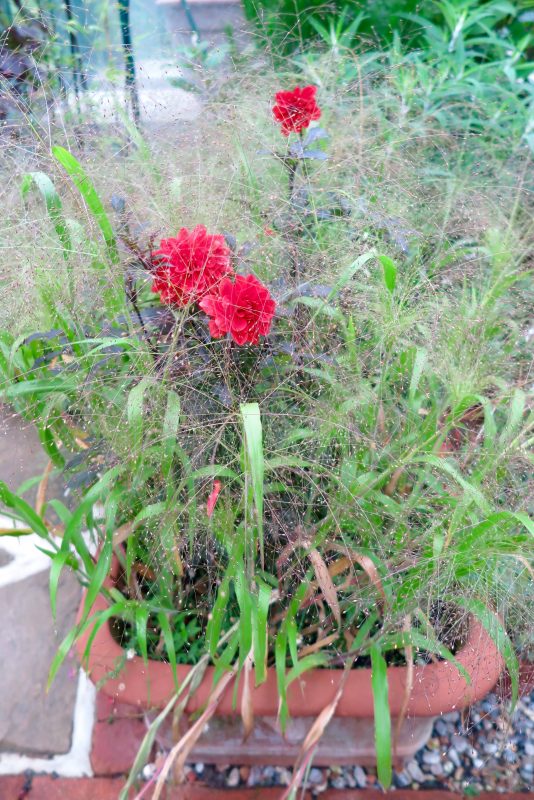
Combine a dahlia with a grass. Here Dahlia ‘Double Tally Ho’ is planted with Panicum ‘Frosted Sensation.’
Dahlias with sculpture
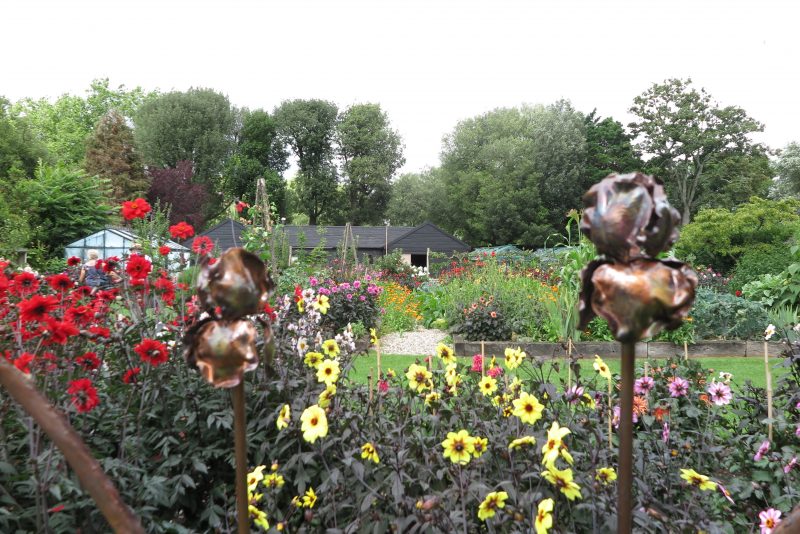
The Salutation has many sculptures by Emily Stone. Here a bronze iris is flanked by red Dahlia ‘Tally Ho and yellow Dahlia ‘Mystic Illusion.’
A simple recipe for an eight-month border
This is a simple border plan which can be in flower from February to October, depending your climate. There are bulbs in the border at the beginning of the year, with bergenias in the front. Then irises and peonies take over, followed by dahlias. This orange dahlia is City of Alkaar.
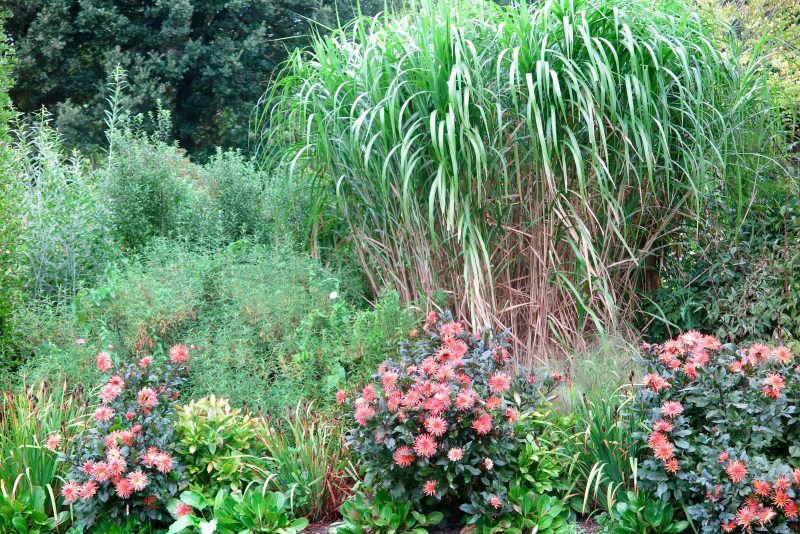
This border repeats one kind of dahlia (‘City of Alkaar’). in between, there are peonies and irises.
Easy ways to deal with dahlia problems
I’ve found dahlias very easy to grow, but they do have a few problems. They get eaten by slugs. The flowers can be nibbled by earwigs. There’s also the thought of digging them up and storing them over winter. All three of these problems are relatively easy to deal with.
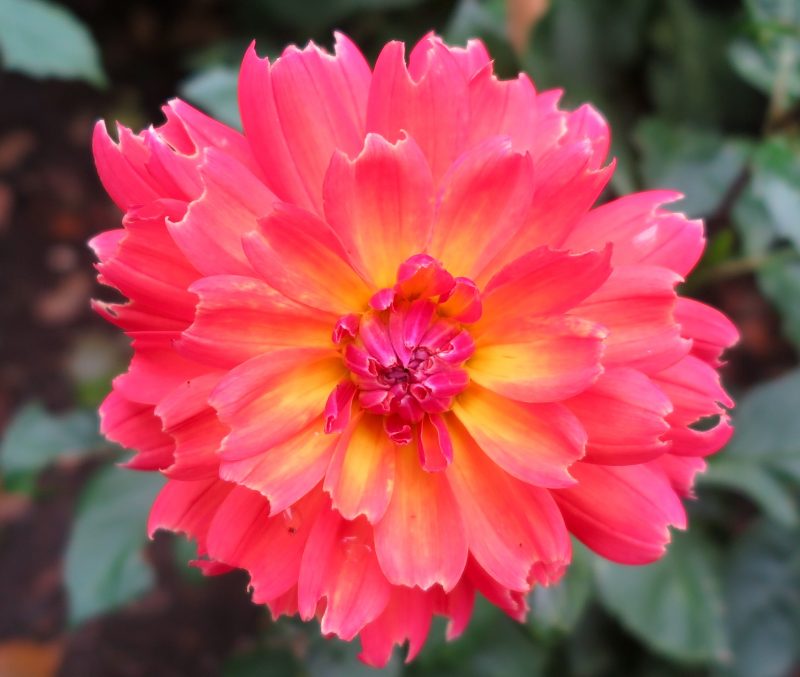
A dahlia nibbled by earwigs. You can see the jagged edges of the petals.
Steven recommends using Growing Success, an organic-approved slug remedy and also a wool-based mulch which slugs don’t like crawling over. Use these from February onwards. Once the plants are big enough in June and July, slugs and snails won’t matter so much.
Steven gardens in a wildlife-friendly way. To deter earwigs, he puts a mixture of molasses and boric acid in a flowerpot and puts it upside down on a stick. The earwigs crawl in and die, but they’re not poisonous to any other wildlife that eats them.
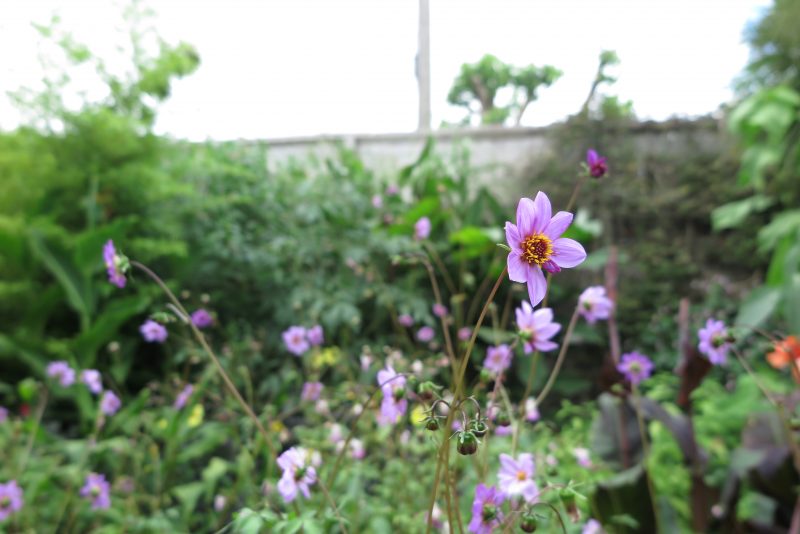
Dahlia ‘Merckii’ is a species dahlia, which means it’s very close to the wild form. The closer a plant is to its wild form, the hardier and more resilient it tends to be.
As for digging your dahlia tubers up in winter, Steven suggests you leave them. He has dahlias that have over-wintered in the ground for thirty years. He covers them with mulch to protect them from frost. Not all will survive, but a surprising number will. ‘Christopher Lloyd threw all his dahlias out at the end of every season,’ he says.
If your dahlias don’t survive the winter, buy new ones.
If I haven’t convinced you to try dahlias, do visit The Salutation. It’s changed dramatically since it was flooded in the surge tide of December 2013. Parts of the garden were completely washed away.
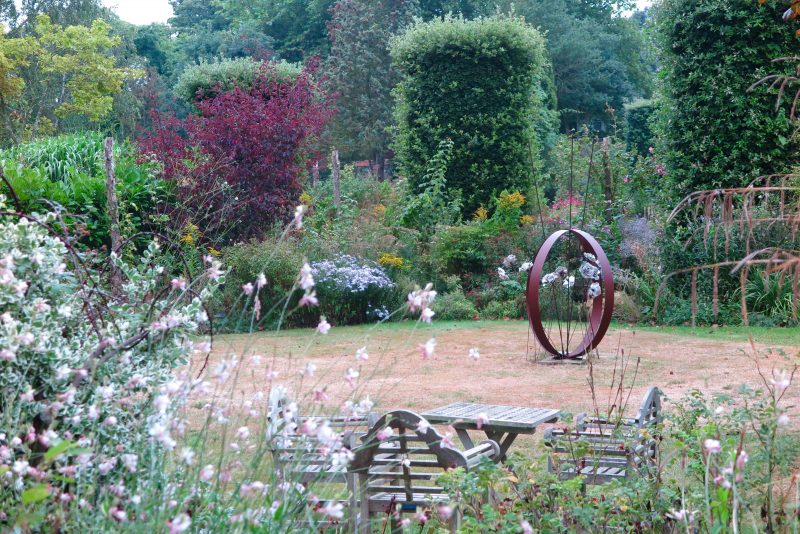
No dahlias – but a striking sculpture by Paul Cummins at the Salutation.
‘We didn’t have much of a budget to replace the garden, so I had to learn alot,’ says Steven. ‘I had such support from the gardening community. The head gardener at Sissinghurst rang up and brought his whole team down for a day just to help. And lots of other people contributed plants or help, too. The experience made me a better gardener and it’s made the Salutation a better garden.’
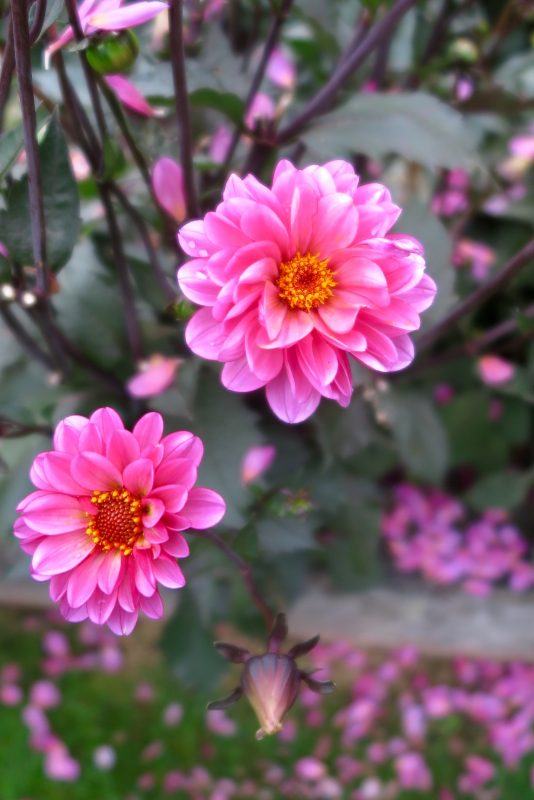
Dahlia ‘Fascination’ is a very popular dahlia.
There is a dahlia festival at The Salutation on the 19th and 20th of September.
The post Make your garden last longer with the new dahlia trends appeared first on The Middle-Sized Garden.
from The Middle-Sized Garden http://www.themiddlesizedgarden.co.uk/make-garden-last-longer-new-dahlia-trends/

No comments:
Post a Comment